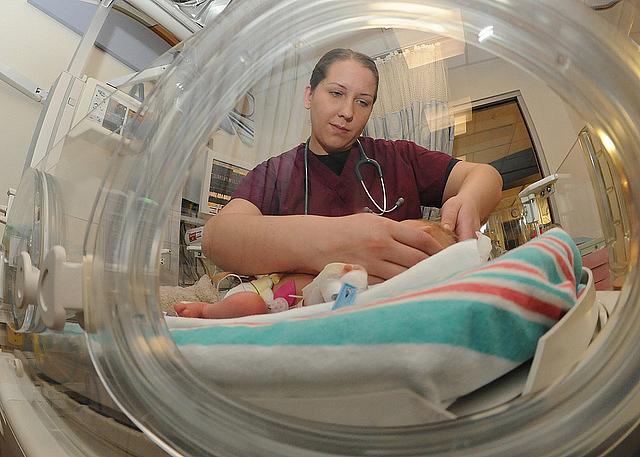Five measures for comparing pregnancy and birth quality that should be in Healthcare Compare

It’s easy to throw stones, and last week I tossed a few at the new California Healthcare Compare site for how it goes about rating hospitals on childbirth, noting that the tool focused too heavily on C-sections and breastfeeding and not enough on other factors that play into the health of the child and mother. I said some nice things about the site, too, in a previous post.
So what are these other factors that Healthcare Compare should measure?
There are literally dozens of possible indicators of quality. I jotted down five below to add to the five currently in Healthcare Compare, and I am eager to hear what others have to say, too.
1. Elective Delivery Rates. The rates of women who decide to have a drug-induced delivery or a C-section prior to 39 weeks has long been considered a marker of bad care. The American College of Obstetricians and Gynecologists (ACOG) and the American Academy of Pediatrics (AAP) both tell their members to encourage women to wait until after 39 weeks to give birth, because prior to 39 weeks babies have a higher chance of ending up with complications that put them in neonatal intensive care.
2. Hepatitis B Vaccine Coverage. The Centers for Disease Control and Prevention recommends that every baby born receive the hepatitis B vaccine before they leave the hospital. Hep B is a serious and stealthy disease. People carrying it don’t always have symptoms and can infect a baby without knowing it. Infected newborns can go on to develop liver disease and cancer as a result. The goal is a 100 percent vaccination rate for all newborns.
3. Antenatal Steroids. This indicator comes from Joint Commission guidelines and research on giving steroids to pregnant women before a premature birth to improve the child’s lung development and reduce the chances that the child will develop a life-threatening illness. If a high percentage of women at a hospital have received the steroids, it indicates that their pregnancy and premature delivery were well managed.
4. Intrapartum Antibiotic Prophylaxis for Group B Streptococcus (GBS). The CDC recommends that pregnant women be tested for the presence of GBS. If a woman tests positive, they should be given antibiotics four or more hours before they deliver. A good GBS antibiotic rate signals that doctors are paying attention to the things that can threaten the life of a child.
5. Neonatal Blood Stream Infection Rate. The Agency for Research and Quality has a whole series of neonatal quality indicators. One of them focuses on health care-associated bloodstream infections in high-risk children. How do they measure that? They look at hospital discharges to see how many babies in high-risk categories are discharged with an infection in a range of categories, including E. coli, septicemia, and various staph infections.
You can find many, many more quality measures if you look. My point with Healthcare Compare is not that the indicators it uses should be ignored but rather that they are not enough, especially for something as basic as pregnancy care and delivery. These are things where even mediocre hospitals have a chance to excel, if only because of the sheer volume of deliveries. Physicians and nurses get a lot of practice and should become better over time. If Healthcare Compare broadened its criteria a bit, it might discover a wider spectrum of success and failure among hospitals in areas that matter more to the health of the child and the mother.
[Photo by U.S. Navy via Flickr.]

